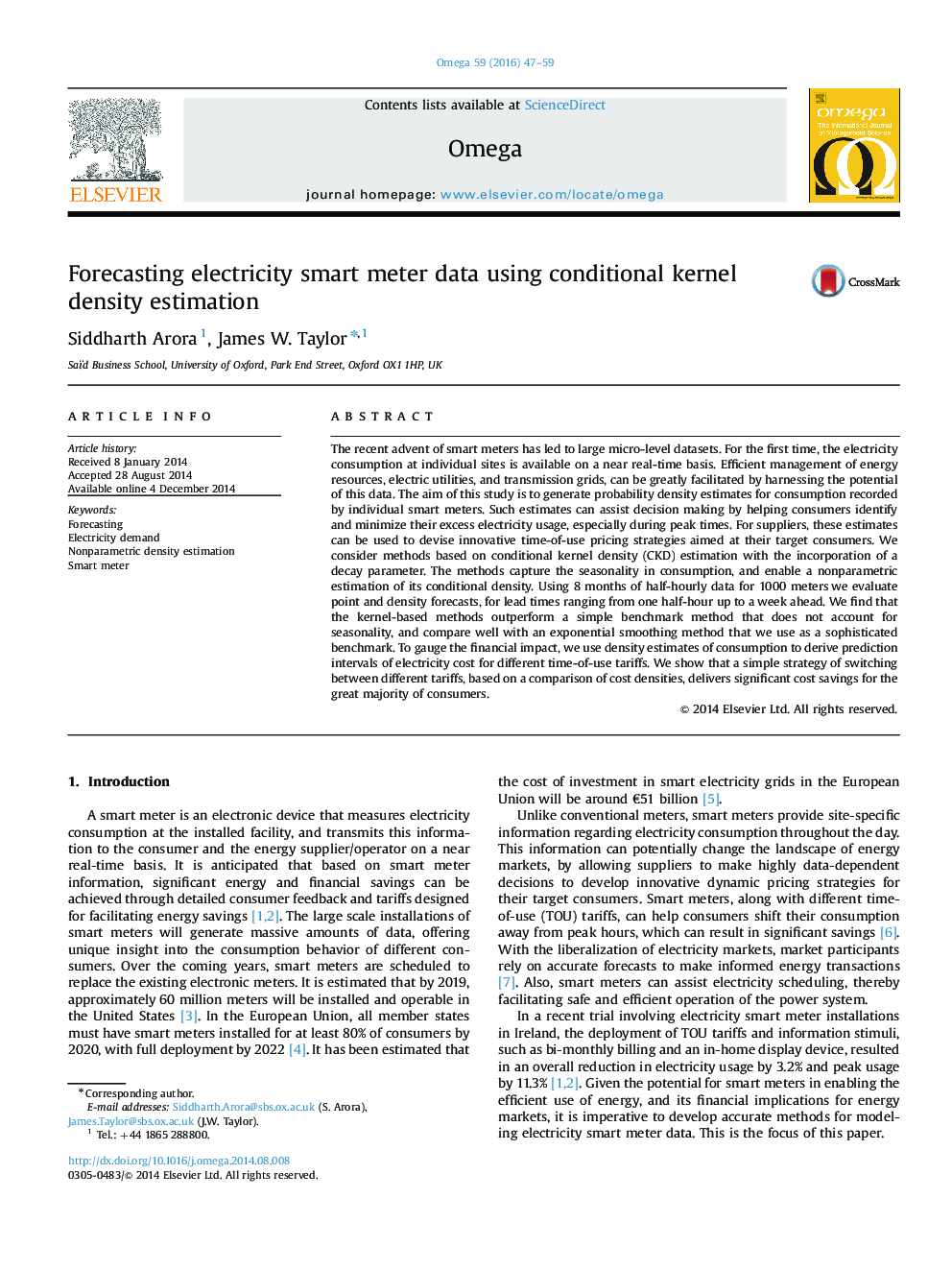| کد مقاله | کد نشریه | سال انتشار | مقاله انگلیسی | نسخه تمام متن |
|---|---|---|---|---|
| 1032453 | 943239 | 2016 | 13 صفحه PDF | دانلود رایگان |
• We generate density forecasts for electricity consumption recorded by smart meters.
• Methods based on Conditional Kernel Density (CKD) estimation are considered.
• CKD methods can accommodate the seasonality in consumption time series.
• We derive prediction interval of electricity cost for different time-of-use tariffs.
• Switching between tariffs based on a comparison of cost densities delivers savings.
The recent advent of smart meters has led to large micro-level datasets. For the first time, the electricity consumption at individual sites is available on a near real-time basis. Efficient management of energy resources, electric utilities, and transmission grids, can be greatly facilitated by harnessing the potential of this data. The aim of this study is to generate probability density estimates for consumption recorded by individual smart meters. Such estimates can assist decision making by helping consumers identify and minimize their excess electricity usage, especially during peak times. For suppliers, these estimates can be used to devise innovative time-of-use pricing strategies aimed at their target consumers. We consider methods based on conditional kernel density (CKD) estimation with the incorporation of a decay parameter. The methods capture the seasonality in consumption, and enable a nonparametric estimation of its conditional density. Using 8 months of half-hourly data for 1000 meters we evaluate point and density forecasts, for lead times ranging from one half-hour up to a week ahead. We find that the kernel-based methods outperform a simple benchmark method that does not account for seasonality, and compare well with an exponential smoothing method that we use as a sophisticated benchmark. To gauge the financial impact, we use density estimates of consumption to derive prediction intervals of electricity cost for different time-of-use tariffs. We show that a simple strategy of switching between different tariffs, based on a comparison of cost densities, delivers significant cost savings for the great majority of consumers.
Journal: Omega - Volume 59, Part A, March 2016, Pages 47–59
